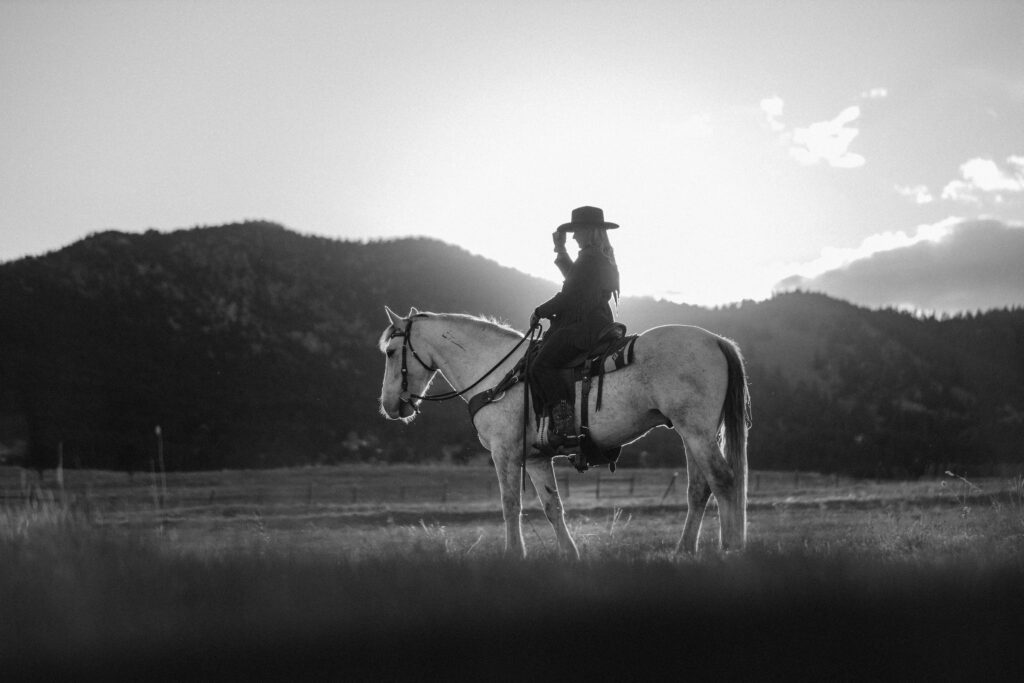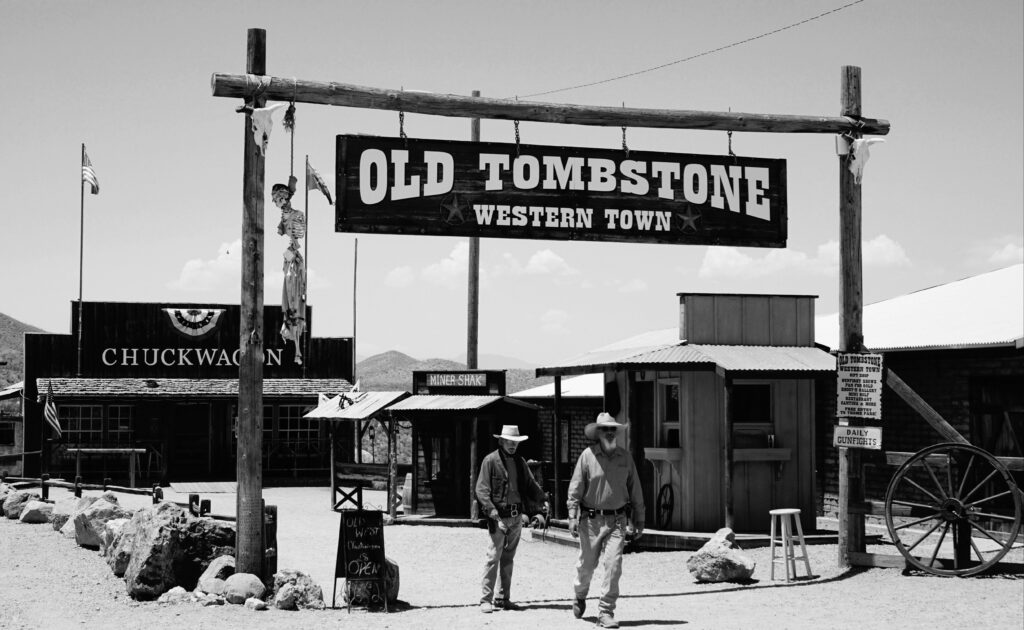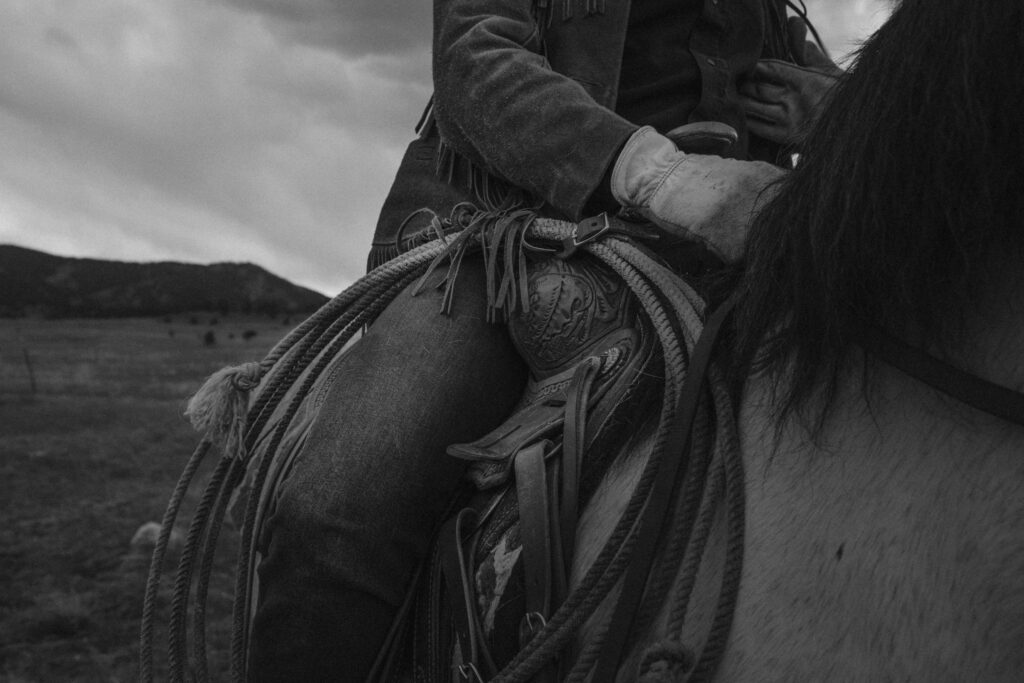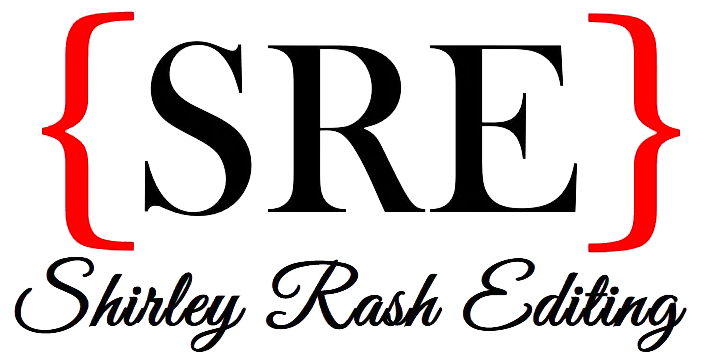Welcome to my new blog series, where we’re going to spend this month examining writing lessons you can learn from the 90s Westerns Tombstone and Wyatt Earp. Today, we’re going to be digging into the narrative structure of both movies. Both have a different approach—Tombstone focuses almost exclusively on one period in protagonist Wyatt Earp’s life while Wyatt Earp is a more general biopic. However, I think Tombstone more effectively uses its narrative structure to achieve what it sets out to do.
Neither movie uses a particularly complex structure. They are for the most part strictly chronological, but in my opinion, Wyatt Earp lacks a strong narrative thread in its attempt to depict its protagonist’s life, whereas Tombstone’s narrower focus strengthens that movie significantly. It is not a given that a longer or more comprehensive story will be less effective, but I think it is a problem for Wyatt Earp because it is symptomatic of how the movie has a lot to say but paradoxically also never really seems to know what exactly it is trying to say about its main character.
Interestingly, there were supposed to be flashbacks to Wyatt’s earlier lawman career in Tombstone, but the movie ultimately dumped them. It starts with the Cowboys in action—with a massacre at a wedding, so you know they’re really bad guys—and what unfolds over the next 2 hours is pretty much all about the leadup to a clash between them and the Earps. As soon as you’re introduced to both sides, you don’t even have to know your history to know that this will get nasty. You get to watch their tense first encounter about 30 minutes into the film and can see firsthand how the situation rapidly deteriorates from there.

Wyatt Earp’s Narrative Stucture
Wyatt Earp, meanwhile, has a runtime of over 3 hours, and it crams so much into that time that it often treats what should be significant moments as merely perfunctory. It almost seemed to me like it was checking off events in Wyatt’s life rather than presenting a cohesive narrative about it or really attempting to flesh out those events and their significance to him. When the narrative doesn’t treat these story beats as important, it’s not surprising that they don’t really land for audiences either.
One of the pivotal aspects of this movie’s Wyatt is how traumatized he is by his first wife’s death. It precipitates some of his worst behavior and has a negative impact on his later relationships. We have some preamble before we see his wife Urilla where he talks at a prostitute—and by extension the audience—about how this is his childhood sweetheart he’s pined over for years. But that’s telling, not showing, and simply telling your audience how important Urilla is rather than demonstrating that with the writing is never going to be particularly effective.

Underdeveloped Plotlines
What we’re actually shown is only approximately 10–12 minutes of Urilla, from her introduction to her burial. That 10–12 minutes is packed with their reunion, their courtship, their marriage, and her death. It’s easy to feel sorry for Wyatt after he’s a widower in the same way you’d feel sympathy for anyone in that situation, but the movie spends far more time depicting the fallout from that death than establishing anything particularly special about Urilla and her relationship with Wyatt. For her to truly matter to audiences and for them to connect with her and, by extension, Wyatt’s pain at losing her, they need to see more of her than approximately 10% of the runtime.
In my opinion, what really hurts Wyatt Earp compared to Tombstone is the movie takes a similar approach to the events leading up to the OK Corral. We’re not even introduced to the antagonists from there until over halfway through the movie, and in about 1 hour, 15 minutes, they’re dispatched. That’s a little under 40% of the runtime but in the back half of the movie. When we are introduced to the Cowboys in this movie, there’s already bad blood between them and Wyatt. The characters helpfully shout some explanations for their feud at each other for the benefit of the audience, and Wyatt and his nemesis Sheriff Johnny Behan also dutifully repeat all the reasons they don’t like each other in a chat at a saloon, but again this is telling, not showing.

Telling audiences that these guys have a major beef with each other is not the same as showing it. Because audiences have not been able to observe any of the conflict development or any of the antagonists beyond them screaming about how much they dislike the protagonist, it’s hard to connect to the storyline or feel much vested interest in it. At the end of the day, the audience for Wyatt Earp has only a few minutes of conversation that’s supposed to underpin what fuels the violent antagonism between the Cowboys and the Earp-Holliday faction and what motivates any of the individuals involved. That doesn’t make for a very compelling audience experience. The movie devotes just enough time to Tombstone and the Cowboys to ensure that this is a major subplot, but it’s nowhere near enough time to really do it justice.
Tombstone’s Narrative Structure
In about the same span of time that Wyatt Earp devotes to the entire Tombstone/Cowboys subplot, Tombstone has only worked its way up to the infamous shootout. The fallout from it then occupies another 30 or so minutes. This focus and development give these storylines more room to breathe, and they have more of an impact on the audience as a result. There is no mention of Urilla in this movie, but I’d argue that Tombstone’s depiction of Wyatt’s grief over his assassinated brother Morgan is far more devastating simply because the audience has been able to watch Wyatt’s dynamic with his little brother. You watch the two celebrate being reunited, work together, joke together, hang out together, and bicker together for nearly 90 minutes before Morgan dies, and that has more emotional weight to it than if we only spent 10 minutes with Morgan.
Dueling Scenes
What’s especially puzzling to me about the narrative structure of Wyatt Earp is that it breaks its chronological narrative when it devotes its final 15 minutes to an epilogue scene years in the future. It shows Wyatt and Josie, who has healed his heart over Urilla’s loss, on an adventure in Alaska and a coincidental meeting between them and the relative of a man named Tommy Behind-the-Deuce. At this point, the only previous mention of Tommy is an early conversation between Josie and Wyatt. She makes a cryptic reference to having heard about what happened, which Wyatt shrugs off as just stories.
But this meeting seems to confirm the story was real and even features a full-fledged flashback to show Wyatt bravely holding off a mob that wants to lynch Tommy. It’s not a bad scene as far as that goes, but its placement here seems wasted. Tommy was a one-time throwaway line of conversation an hour earlier, so it is anticlimactic to suddenly stop the story right at its end to present this new story. And at this stage what does this scene tell us about Wyatt that we don’t already know? He’s already been shown to be fearless in the execution of his duty and skilled at handling rowdy situations. What does it tell the other characters in the scene about Wyatt Earp that they don’t already know?
After all that, it then returns to Wyatt saying some people say it didn’t happen that way, which Josie shrugs off. What does he mean? Is he being modest about his heroics or is he admitting it really didn’t happen that way? I’ve rewatched the scene multiple times as I worked on this post, and I still don’t know! This parting line potentially undercuts the point being made, if that weren’t already muddled because the movie doesn’t seem to know what it actually wants to say about Wyatt Earp in general. I’ll talk more about this next week, but the movie never particularly settles on a strong point-of-view about Wyatt beyond Urilla’s death crushed him.
It might also have been an interesting complication to explore (I love delving into how legend and myth collide with history!), but it’s nowhere near developed enough to work, so it just seems tacked on. I suspect the 15 minutes used for this would have been better spent on developing the conflict with the Cowboys to be more robust in its own right.

In contrast, Tombstone also has its own scene of Wyatt holding off an angry crowd, but it’s incorporated much more holistically in the story. It occurs about 50 minutes into the movie, after the opium-addled antagonist Curly Bill shoots the town marshal. Despite not being law enforcement, Wyatt quickly takes control of the situation and holds off the outlaw’s very angry friends, as well as the equally outraged crowd of bystanders that wants to lynch Curly Bill. It’s a scene that is both suspenseful and amusing since Wyatt so solidly stands down the inept Ike Clanton, but it also is a very efficient scene in terms of storytelling. It gives us a great sense of Wyatt’s matter-of-fact, take-charge style when he feels the need to assert it. It shows us Doc’s loyalty to him as he manifests out of a saloon to lend a hand. It helps further the plotline about the growing hard feelings between the Earps and the Cowboys. It also gives us some good character development for a number of the Cowboys as we see them in action. It ultimately achieves far more than the Wyatt Earp scene does, and its placement and role in the overarching story is part of that.
You can watch that scene here.
If the final scene in Wyatt Earp were a twist, it might work at the end, but it’s not. It’s unfocused/unclear in its intent and just more of the same characterization we’ve already seen over 3 hours for Wyatt. It also otherwise centers on an insignificant minor character when it should be wrapping the story up. Meanwhile, Tombstone instead wisely places a similar moment much earlier, where it manages to both further the plot and conflict and flesh out pivotal characters who are now further drawn into the storyline precisely because of what goes down in that scene.

Final Thoughts on Narrative Structure
To be fair to Wyatt Earp, the project initially started as a television miniseries, and I suspect these issues wouldn’t have been issues at all in a project of that scope. In that medium, I imagine the subplot about Urilla would have been fleshed out more, in the same way that the events with the Cowboys likely would have been more fully realized. However, I think once the project shifted from a miniseries to a movie, there needed to be a more realistic assessment of what could be covered effectively within the new time constraints.
Applying these lessons to writing
One of the issues I often see in manuscripts is a similarly episodic approach to plotting that Wyatt Earp has. Things happen in the story, but there often doesn’t seem to be any real narrative cohesion to it, and plot complications are resolved as quickly as they manifest with no real build-up or proper development. Real life can certainly unfold that way, but that’s not really how narratives work. It’s especially not satisfying for readers when complications and conflict fizzle out without any proper development or resolution.
Though much of this applies to fiction manuscripts, nonfiction narrative writing is not exempt either! A great example—on this very topic—is Jeff Guinn’s excellent The Last Gunfight, which I recently reread. Guinn provides a well-researched account of what happens, but he doesn’t just jump right in to tell you about the titular event. Instead, you read 200 pages—a good 50% of the book’s length—before he even gets to the infamous shootout. That’s because he’s taking his time to sketch out the context and the historical figures involved. The result is compelling and effective, and the book is all the better for it.
If you’re struggling with the structure of your fiction or nonfiction manuscript, I can help! Looking at the plot and narrative structure is part of the developmental editing and manuscript critique services I offer authors. I’ve also written other blog posts that touch on some of these issues.
Next time
Regarding Tombstone and Wyatt Earp, I think another central difference is the role of conflict. While Wyatt Earp’s narrative structure lessens the tension, the movie itself also repeatedly seeks to minimize moments of conflict between characters that could add richness both to the plot and characterization. Tombstone, meanwhile, effectively amplifies the conflict every chance it gets. We’ll talk about that more next time.
Tombstone Versus Wyatt Earp series


